
Proper etiquette in the 21st century
Etiquette isn’t about old-fashioned politeness or outdated rules about opening doors and folding napkins (and it’s not always common sense). At its core, good etiquette is the oil that keeps society running smoothly. “What we call ‘good manners’ are really a list of agreed-upon social rules that let everyone know what to expect when interacting with others,” says Valerie Sokolosky, an etiquette expert and the author of Do It Right!, a comprehensive guide to modern etiquette. “Knowing these ground rules of good manners isn’t just about being polite—it’s about how to be kind and gracious in every situation.”
There are many different types of social situations, each with its own unique set of etiquette rules and social skills, like tipping etiquette, wedding etiquette, spa etiquette or just sending food back at a restaurant without being rude. Of course, you probably do the “right” things naturally a lot of the time, but there’s also a good chance you’re accidentally making some serious etiquette mistakes, too. In addition to Sokolosky, we spoke to two other top etiquette experts to get tips and advice on what you should be paying attention to—and what you can let slide—when it comes to modern manners.
What is the golden rule of etiquette?
It really boils down to this: Etiquette is about people, not policies. “Good manners are all about helping people, including yourself, feel comfortable no matter the situation,” explains etiquette expert Lisa Grotts, founder of the Golden Rules Gal. “Instead of enforcing arbitrary ‘old-school’ rules or what is ‘right’ and ‘wrong,’ etiquette is about following guidelines that lead to greater respect, cooperation and understanding.”
If that sounds a little confusing, don’t worry. We’re here to guide you through it all with expert advice so you know what to do in every situation.
Get Reader’s Digest’s Read Up newsletter for more etiquette tips, humor, cleaning, travel, tech and fun facts all week long.
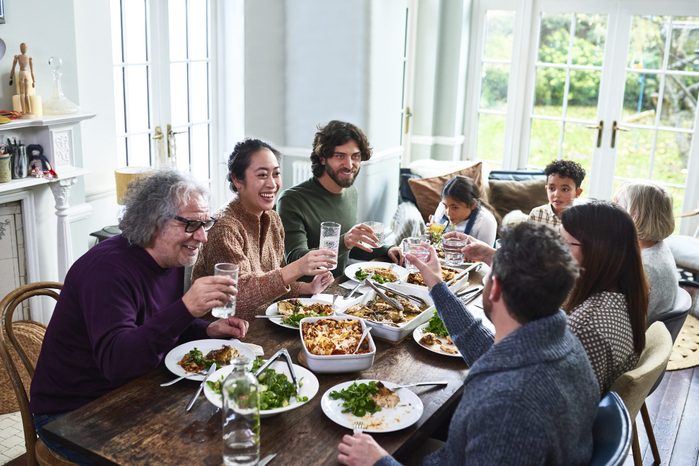
1. Wait to eat until everyone is seated and served
Whether you’re dining at home or in a restaurant, proper table etiquette still dictates that you wait to begin eating the meal until everyone is served and the host begins to eat, says etiquette coach Maryanne Parker, founder of Manor of Manners. If your group is larger than eight people, it’s fine to wait until most of the others near you are served. If the meal is served buffet style, you can eat when you return to your table.

2. Put your napkin next to your plate, not on it
When you learned table manners, were you taught that the way to show your server you’re finished with your meal is to place your napkin over your plate? This is false, not to mention messy, says Sokolosky. “Think of all the things on your plate that are now on the napkin and will get on whomever picks it up, or that will stain [the napkin],” she says. “Instead, gently fold your napkin and place it next to your plate on the table.”

3. Shield your lemon when squeezing
This is one tip that’s been around since the Victorian era! Nobody liked a shot of lemon to the eye then, and no one likes it now. Spare your dining companions by using your hand to shield your lemon as you squeeze it into your drink. “It’s these little things that show you are thinking of their comfort,” Sokolosky says.

4. Pass food to the right
In general, pass food and condiments counterclockwise, or to the person on your right. “This keeps everything moving smoothly and ensures everyone gets every dish,” Sokolosky says, adding that you should avoid reaching across the table or across other diners to get what you want. Instead, ask politely for it to be passed to you. When you’re dining out, you should also forgo these polite habits restaurant staffers dislike.

5. Learn how to eat shellfish like a pro
Most folks are pretty comfortable with knowing how to eat a salad or cut a steak, but bring out a platter of crawfish or oysters and suddenly it gets very confusing—and maybe messy too! Learn how to eat “tricky” foods—including shellfish, lobster, mussels, soup dumplings and sushi—before going to a restaurant that serves them. If you’re dining with people you particularly want to impress, consider practicing a couple of times so you’ll feel confident.
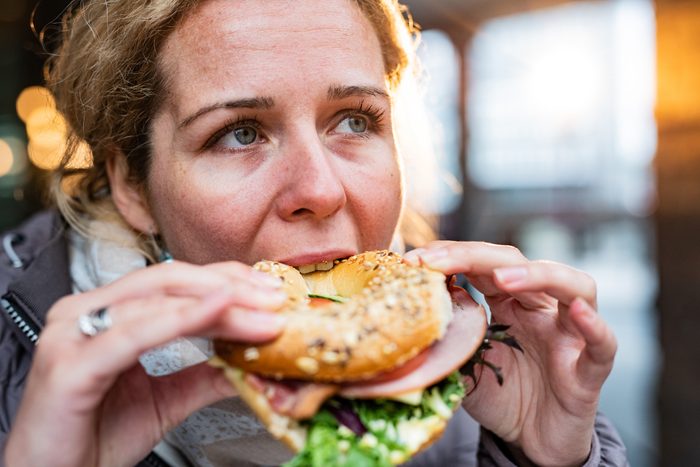
6. Don’t scarf down your food
Gulping your food isn’t just impolite, it’s bad for your health—causing bloating, heartburn and nausea. Learn how to eat slower, to help you and everyone you’re eating with have a better dining experience.

7. Tip 20%
Tipping etiquette is one of the most confusing areas of etiquette—likely because it’s constantly changing. For instance, you may have been taught that you should tip 10% for poor service, 15% for good service and 20% or more for work that goes above and beyond. But in the last few years, prices for nearly every service have gone up, and so has the expected tip. “The proper tip these days is 20%, minimum, for pretty much any service, including restaurant servers, hairstylists, nail techs and massage therapists,” says Parker.
If you’re upset about tipflation, don’t take it out on workers, who count on tips to make the majority of their wages. “Remember, frugal and cheap are two different things,” she says.

8. Introduce the person of higher status first
Making proper introductions is important, especially in business settings, but it can be tricky. The proper way to do it, says Sokolosky, is to introduce the person who is older or of higher status first. For example, “Mrs. CEO, I’d like you to meet the mail guy, Ron.” In social situations, you should also add a little tidbit of relevant information, she says. For example, “Jill, I’d like you to meet Bob—we met in college in North Carolina, where we were studying business. Bob, Jill is a business manager at Widgets Corporation.” You can also try one of these interesting conversation starters to keep the chitchat flowing.
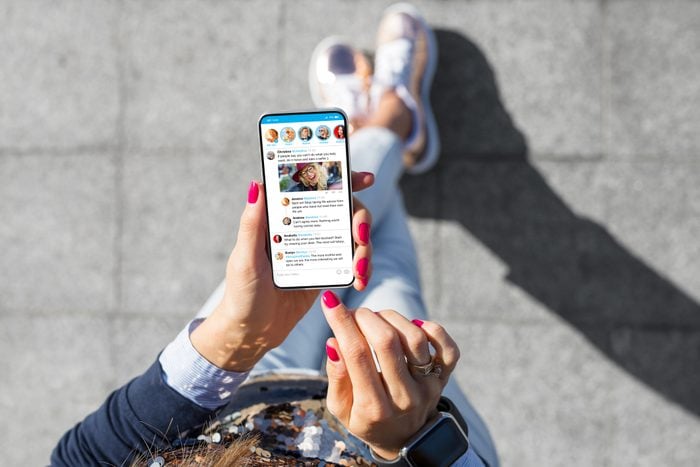
9. Don’t add your boss on social media
Some companies boast that they are “one big family,” but while that’s a lovely sentiment, you should not treat management and co-workers like close friends, says Parker. This is especially true if you’re considering adding your boss on Facebook or other social media platforms. “Keep your personal life personal,” Parker says. If you have a public profile, you may want to consider making it private, depending on the field you work in, she adds. “There are too many examples of people working in teaching, nursing and government jobs getting fired for what they post on social media.”

10. Master business communication
The etiquette for how to speak in business settings can be tricky and vary depending on the setting and your career field, but becoming adept at it can be the difference between getting ahead … or not. The right business etiquette is to be polite, not go overboard with the technical lingo (but use it when appropriate), and always lead with a positive remark, says Sokolosky. Then you’ll always know what to say in an interview.

11. Don’t send one-word emails
Replying to a group email with “Got it!” or “Thanks!” is both irritating and inefficient—not to mention poor email etiquette. It’s also a way to make sure your emails get ignored in the future, says Grotts. On the flip side, don’t “reply all” to a group email if your comment is for only one person. The rest of the group doesn’t want to get pulled into your side conversation.

12. Write complete sentences for email, but not texts
Texting has made communicating very casual, and it’s fine to ignore strict grammar rules. Texts are supposed to be short and can use GIFs or pictures, punctuation is often omitted and emojis fill in a lot of communication blanks. Emails, on the other hand, are still a bit more formal and generally contain more text. This means you should write in complete sentences with good grammar, spelling and punctuation, says Parker. It’s also a good idea to skip emojis, since they don’t always come through properly in email.
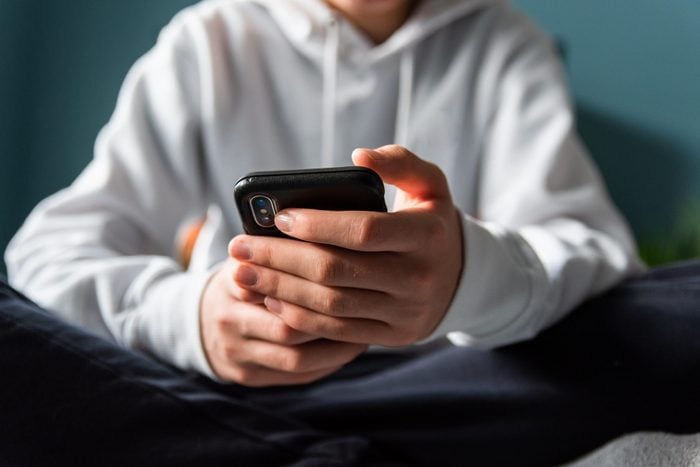
13. Don’t post pictures of other people on social media without asking first
Got a great group shot at dinner and want to share the fun? Wait. “Don’t post pictures of other people or their children, nor tag them, anywhere online without their permission,” says Grotts. What you think is fun, others may see as embarrassing, or perhaps they just prefer privacy, and respecting their feelings is the very definition of etiquette. The other cardinal rule of social media is to never say anything online that you wouldn’t say in person, she adds.
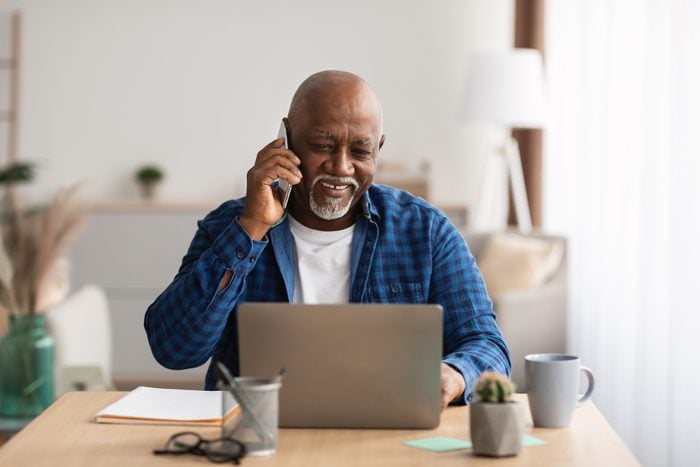
14. Avoid voicemails, or make them brief
Voicemail is a casualty of smartphones. In fact, most people don’t check their voicemails at all, so it’s not uncommon for inboxes to be constantly full and unusable. Even businesses are moving away from voicemail systems. This is due to the ease and simplicity of texting, says Parker. Why listen to a 30-second rambling voicemail when you can read a text in five seconds and glean the same information?
So instead of leaving a voicemail, just text the person. Wondering how to be polite if that’s not an option? Consider sending an email, or if you must leave a voicemail, be brief and concise, she advises.

15. Don’t say yes when you mean no
A common etiquette mistake people make is not being honest and instead saying “yes” or “maybe” when what they really mean is “no,” says Grotts. “People feel like the ‘nice’ thing to do is to say ‘yes,’ but then end up feeling overwhelmed or overcommitted,” she says, adding that this can lead to rude behaviors like backing out at the last minute. “It’s good manners to say ‘no’ when you can’t do something. People may be disappointed, but they will understand.” The trick is to learn how to say no or decline an invitation without apologizing but in a way that is still polite and respectful, she says.
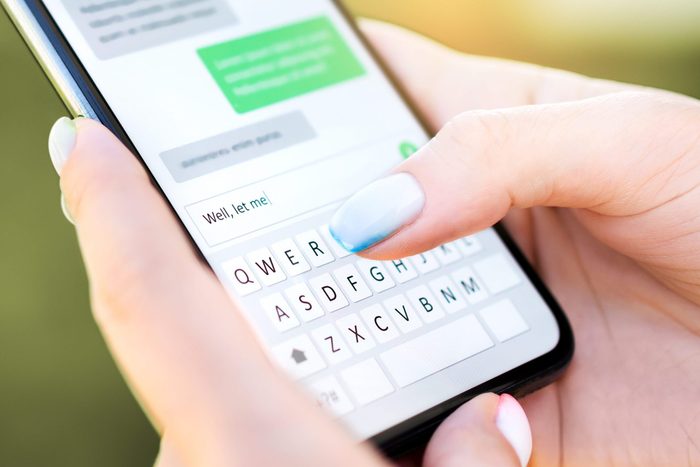
16. Respond to personal texts within eight hours
Our phones are constantly pinging notifications around the clock, and it can be stressful when so many people demand your attention. Proper etiquette doesn’t dictate that you answer every text immediately—how would we get anything done?—but you should answer within 24 hours, and within eight hours if it’s someone close to you, says Parker. Even a text that’s just a meme deserves at least an emoji reply if it’s a loved one, because they are trying to communicate with you.
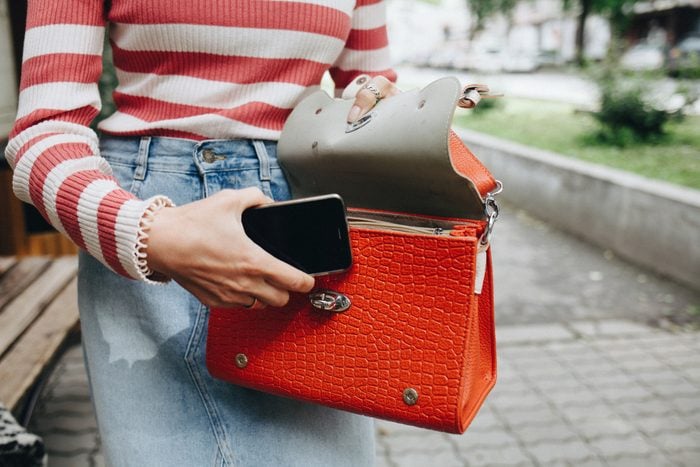
17. Put away your phone when you’re with others
Good manners in the age of smartphones isn’t a mystery. You just have to follow one important rule: Physical people take precedence over online folks, says Grotts. This is as true at the dinner table at home as it is in a restaurant with co-workers or in a movie theater with friends. Put down your phone, and be present. “It’s as simple as turning your phone facedown or tucking it into your purse or pocket so you can give the people you are with your full attention,” she says. Or go a step further and turn on your phone’s “do not disturb” function to temporarily silence all calls, texts and other notifications so you’re not distracted by a vibration or tempted to sneakily check it. “Nothing feels more frustrating than being with someone physically who isn’t present with you mentally.”
If you do need to check your texts (perhaps the kids are home with a sitter), excuse yourself from the table and head to the bathroom if you’re in a public place. With friends? Simply explain the reason, and keep your online interaction as short as possible.
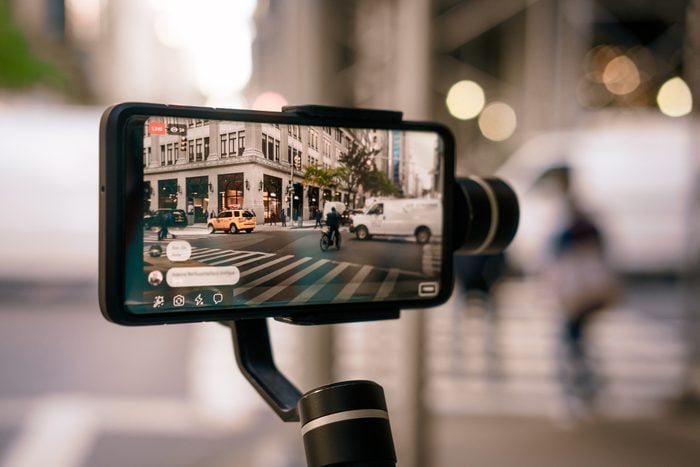
18. Be respectful when filming videos in public
There’s a disturbing trend, largely fueled by people filming videos for YouTube or social media, called “main character syndrome.” This is when people turn an event or public place into their personal stage, often at the expense of others, says Parker. Guests announcing a pregnancy or getting engaged at someone else’s wedding is such a breach of wedding etiquette that it’s become meme-worthy. Be conscious of what and where you’re filming, and don’t use other people as props for pranks or viral moments.
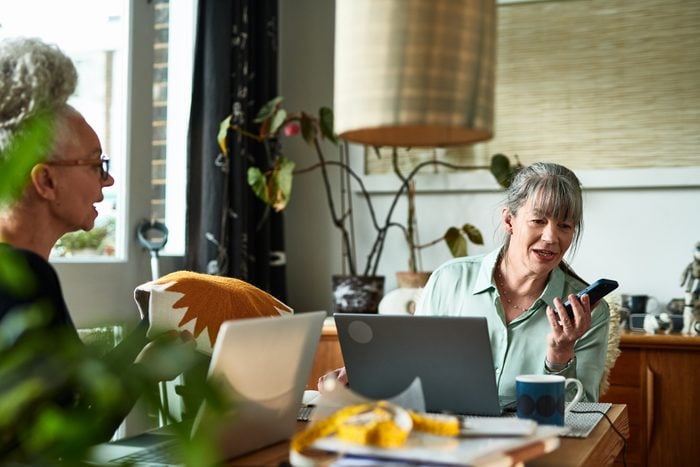
19. Let others know when they’re on speakerphone
Talking on speakerphone is convenient and seems like a good idea … until you’re on the other end and realize that your friend’s spouse heard everything you said as you vented about your sex life. “The polite thing to do is to start a conversation by saying, ‘Hi, I’m so glad you called! Just so you know, I’m in the car, so you’re on speakerphone with me and hubby,'” says Parker. You can then ask if they prefer you to make the conversation private or call them back at a later time when you’ll be able to speak normally.

20. Don’t have loud phone conversations in public
And if you even had a thought to take the call on speakerphone, banish it from your head immediately. If you have an important call to make, the polite thing to do is step outside or to a more private location, says Parker. Don’t have long, loud conversations in the grocery store, waiting rooms, checkout lines, on public transportation or (heaven forbid!) in a bathroom stall. In addition, she adds, do not have conversations or play music or podcasts through your speakerphone in public places, including public parks, beaches and on hiking trails if others are nearby.
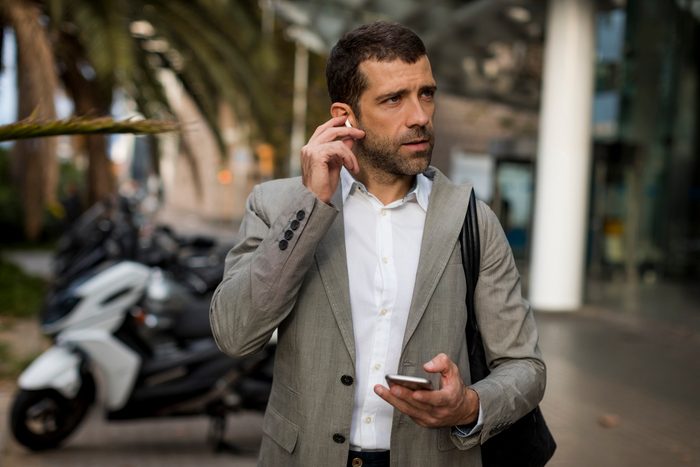
21. Take out your AirPods when talking with others
You may have noticed the trend of people constantly keeping AirPods and other wireless earbuds in their ears. They are tiny and easy to lose, so it makes sense that people want to keep them secure at all times … but that doesn’t mean leaving them in your ears 24/7, says Grotts. “It makes it harder for you to hear what others are saying, but even more important, it makes the other person wonder if you’re listening, as they can’t tell if they’re on or off,” she explains. The polite thing to do is to remove both earbuds when having a conversation, or at least take out one if it’s a short conversation.

22. Remove your sunglasses when inside
Unless you’re an A-list celebrity, don’t be shady. Good manners means removing your sunglasses when going indoors and when greeting someone, whether outdoors or indoors, says Grotts. (You can put them back on after the greeting if you have sensitive eyes outdoors.) “Eye contact is the bedrock of communication,” she says. “Taking your glasses off allows for eye contact and establishes a connection.”
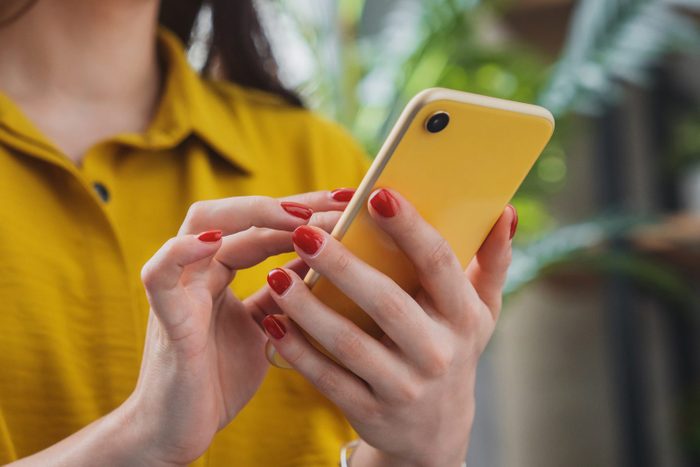
23. Silence or set your phone to vibrate in public
There was a time in the 2010s when everyone had a fun, hand-picked ringtone. It only took a few years of “Hey, Macarena!” going off in movie theaters before people recognized how irritating that can be. The trend now, says Grotts, is to keep your phone on silent or vibrate anytime you’re in public—that goes for your smartwatch, too, if you regularly wear one.

24. Don’t text or talk during a movie
It only takes the glow of one cellphone to light up an entire theater in the most annoying way possible (and get popcorn thrown at you). Be respectful of those around you and practice good movie theater etiquette by not checking your phone or texting during a movie. “And you definitely shouldn’t make or take calls during the movie,” Grotts adds. “Silence your phone or turn it off for the movie, and just enjoy the experience you paid for.” Absolutely need to check your phone? Step out of the theater into the hallway first.
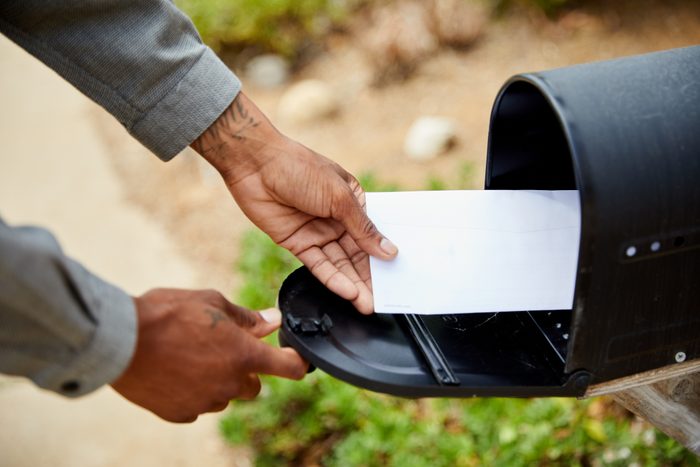
25. RSVP promptly and correctly
Hosting a wedding, birthday party or other event takes a lot of work, money and time, and it’s rude not to give a host a prompt reply to their invitation, says Parker. Whether the invite is paper or digital, wedding invitation etiquette says that RSVP’ing by the date requested is a sign of respect and gratitude for being invited. Always RSVP via the method indicated in the invitation (digital response, QR code, paper reply card, text or email). “It’s sadly not uncommon these days to not RSVP because you’re not sure if you’ll want to go or you think you might get a better offer so you’ll decide the day of—that’s not OK,” she says. “This is one of the fundamental etiquette rules that everyone should follow.”
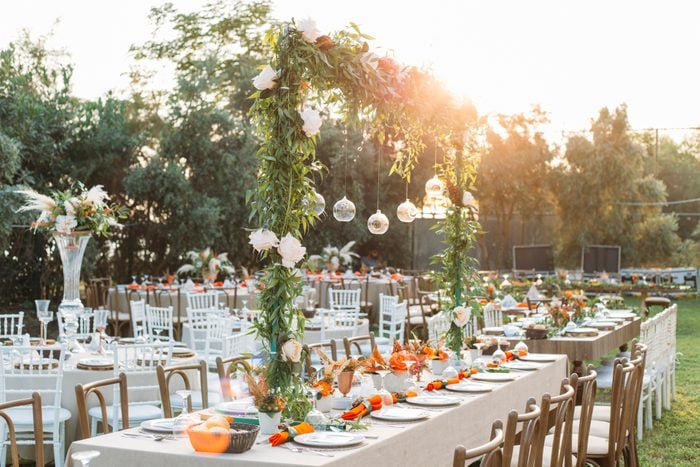
26. Don’t bring a surprise “plus one”
Weddings are expensive and are often budgeted for an exact number of people. “Only bring an extra person if your invitation explicitly offers you a ‘plus one’ and if you RSVP’d that you’d be bringing another person,” says Grotts. In addition, note that only guests whose names are on the envelope are invited, so if the invite isn’t specifically addressed to you and a guest, plan on attending solo. Under no circumstances should you write in an extra “line” on your RSVP.
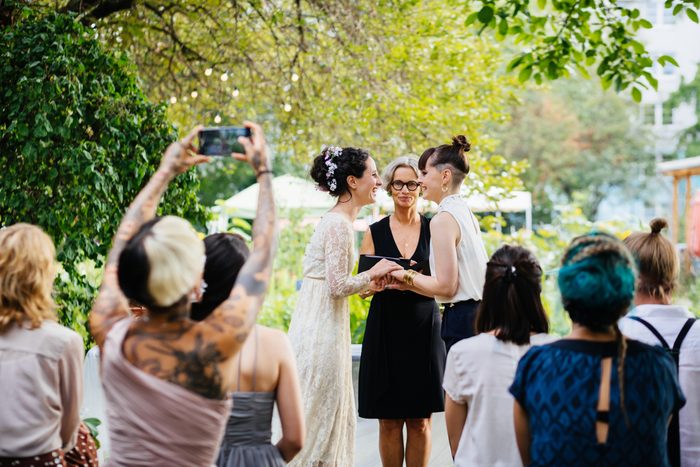
27. Don’t take pictures of a wedding ceremony with your phone
Just like you need to wear appropriate wedding attire, you should behave appropriately, starting with turning your phone off. Leave the photography to the hired wedding photographer, says Parker. Trying to snap your own pictures or videos—particularly of critical moments, like the first kiss or the cake cutting—can ruin the shot for the pros, ruin the view for other guests and may mean the couple won’t get the pictures they want. However, it’s usually fine to snap candid shots during the reception, as long as you’re careful not to get in the way of the professional photographer.
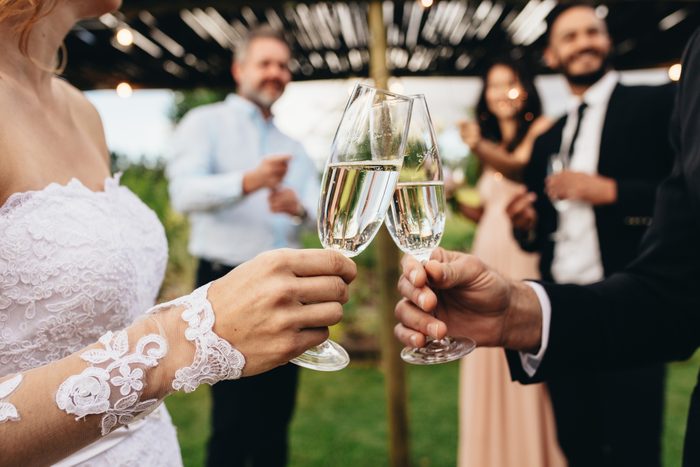
28. Don’t drink to your own toast
A common etiquette mistake is drinking when other people are toasting you. As the person being honored by the toast, simply enjoy the moment. Other people will lift their glass and toast to you, and you can acknowledge it with a smile, a slight bow of your head or an expression of gratitude, says Grotts.
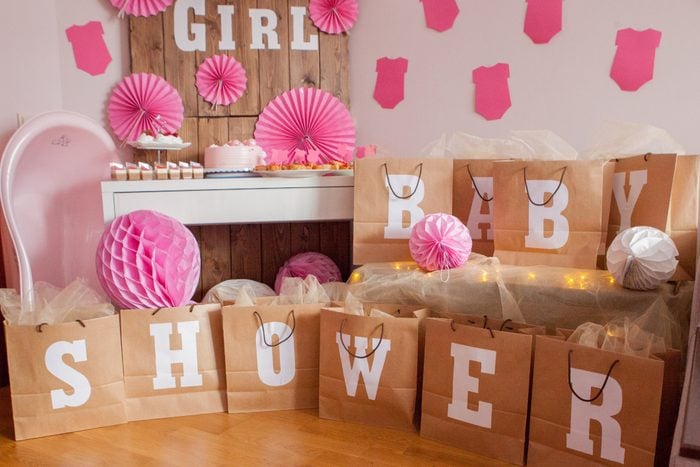
29. Don’t request cash for gifts or post your Venmo
It’s becoming more and more common for people to ask for cash or gift cards for wedding, birthday and baby shower gifts. Some people are even adding their CashApp or Venmo tags, requesting that guests wire them money directly. This is an etiquette no-no, especially when it comes to wedding gift etiquette. “It’s not so much that they’re asking for money but that they’re telling other people what gift to give,” Grotts says. “Part of the fun of giving a gift is selecting something special for that person.” One polite way around this is to add gift cards to your gift registry (along with other items), allowing guests the option of giving you money if they choose.

30. Attach a return receipt to baby gifts
Brand-new humans need a lot of things, and the soon-to-be parents may not know exactly what they need, or their needs will change after the baby comes. (Sonograms have been known to get the gender wrong!) This means it’s more likely the recipient will need to return or exchange a baby gift than other types of gifts. Make it easy on the parents and follow proper baby shower etiquette by attaching a return receipt. Another option is to buy it directly from their baby registry—as stores generally allow things purchased from registries to be returned or exchanged.

31. Ask about food preferences
Hosting a party? Inviting a new friend out for lunch? Arranging a play date for your child’s friend? Take a minute and ask whether they have any food allergies, food intolerances, religious standards or special diets you should be aware of, says Sokolosky. You don’t have to cater to every individual whim, but it’s polite to ask in advance so that at the very least they can make their own food arrangements. If you’re having a buffet, be sure to label foods with the most common allergens, like nuts or gluten.

32. Bring a gift for the host
“If someone was kind enough to invite you to their party, it’s polite to bring a gift for the host, like flowers or a bottle of wine,” says Grotts. “It’s also nice to offer to bring a dish or drink to share, even if they don’t take you up on it.” Heading to a get-together during the festive season? Brush up on these important holiday party etiquette rules.
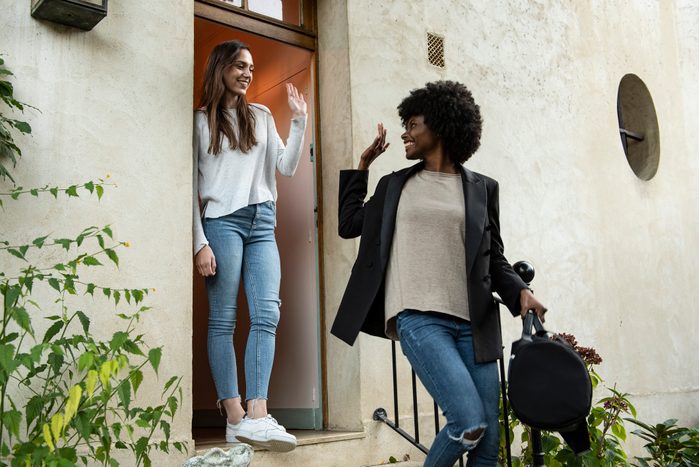
33. Say proper goodbyes
It can feel awkward, time consuming or tricky to say goodbye at a social event, so it’s understandable that you might want to duck out unnoticed, like an Irish exit. While that may be OK in certain situations, at a formal or small event, resist the temptation and instead take the time to say goodbye and express thanks to at least the host. Otherwise, they may feel upset or worried when they realize you’re not there. You can be firm with your boundary of leaving while still being polite, Sokolosky adds.
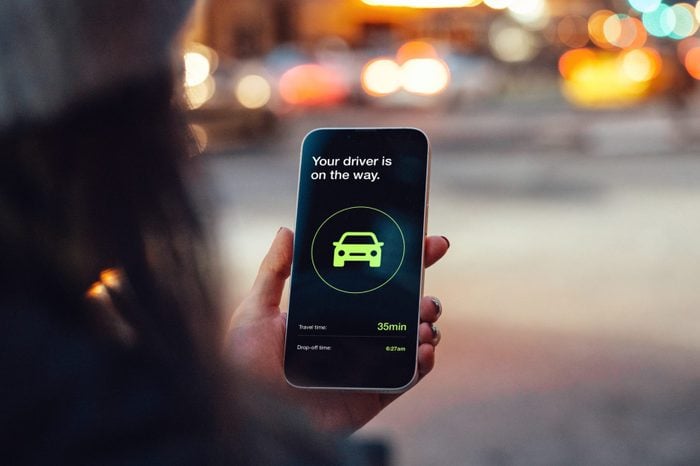
34. Call an Uber for drunk guests
A good guest won’t get sloppy drunk at someone else’s party, and a good host won’t let their guests drive drunk. “You can arrange for them to stay at your home, for someone to pick them up, or call them a taxi or Uber,” says Sokolosky. (Note: Many ride-share services will not pick up people who are heavily inebriated or will charge extra for the ride.)
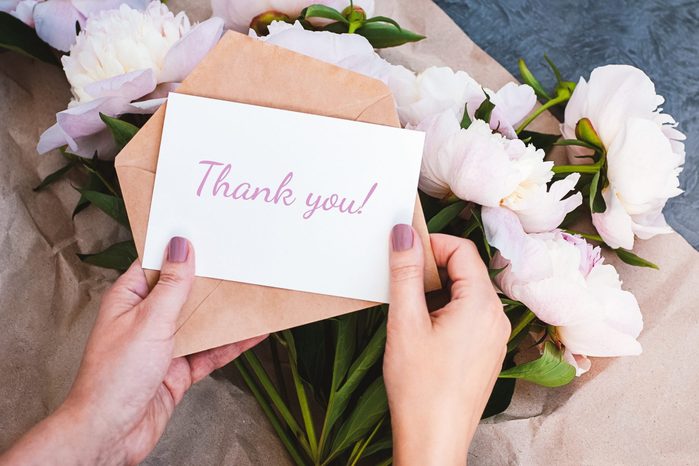
35. Acknowledge gifts with a thank-you note or text
Gift givers love to know that: a) their gift was received, and b) the recipient enjoyed it, says Grotts. This can be as simple as a quick thank-you message via text or email saying, “I got the cookbook in the mail today, and I am so excited to try some recipes! Thank you for your thoughtfulness.” Larger gifts, including cash or items worth more than $100, should be acknowledged with a phone call and/or a handwritten thank-you card, she says.
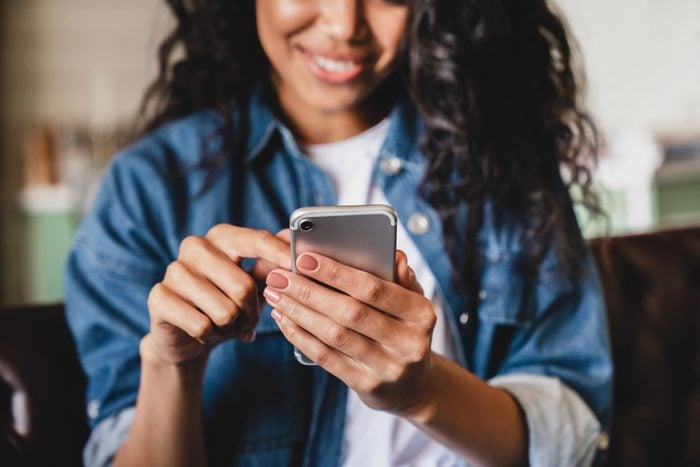
36. Send separate thank-you messages
Yes, it may be faster to send one big thank-you text, but each person deserves their own acknowledgment and gratitude, says Parker. Wording can be similar, but each message should be sent separately, even for group gifts (unless there are no individual names on the card), she adds.
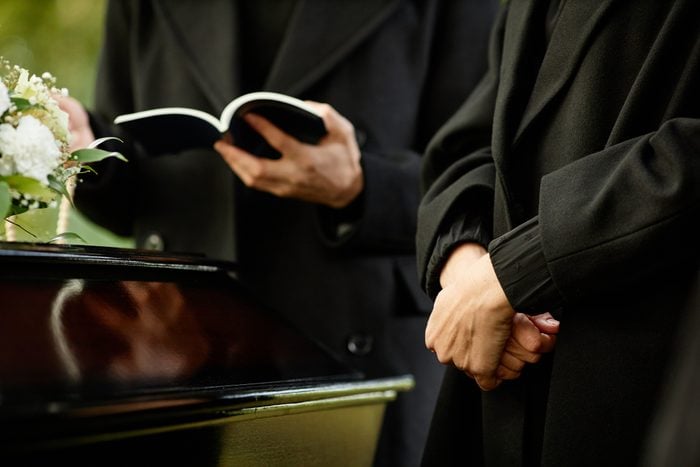
37. Follow the grieving family’s lead
Funeral etiquette can vary based on religion, culture, location and families, so it’s easy to feel unsure and worried about doing the wrong thing. If you’re not sure about the protocol, follow the lead of the grieving loved ones. If they wear black or cover their head, then you should too. Not comfortable asking? There’s lots of information online about every type of funeral, like Jewish funeral etiquette for non-Jews.
In case, someone you know is going through depression. Here’s what to say when someone is depressed.
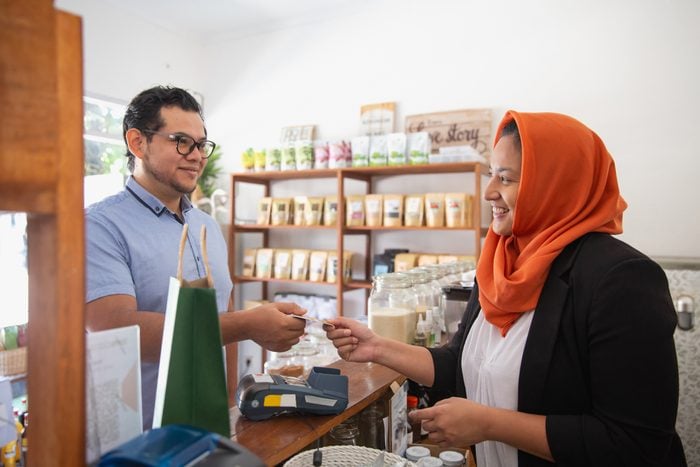
38. Don’t use terms of endearment for people who aren’t close loved ones
These days, calling someone you don’t know (like a server, a cashier or a customer) names like sweetheart, honey, missy, darling, handsome, cutie and the like is a huge faux pas, says Sokolosky. While you may think you’re just being friendly or complimentary, this can come across as patronizing at best and harassing at worst. “Take the time to learn the person’s name and use it appropriately,” she says. “If you don’t know their name, Miss, Ms. or Sir are all fine.”
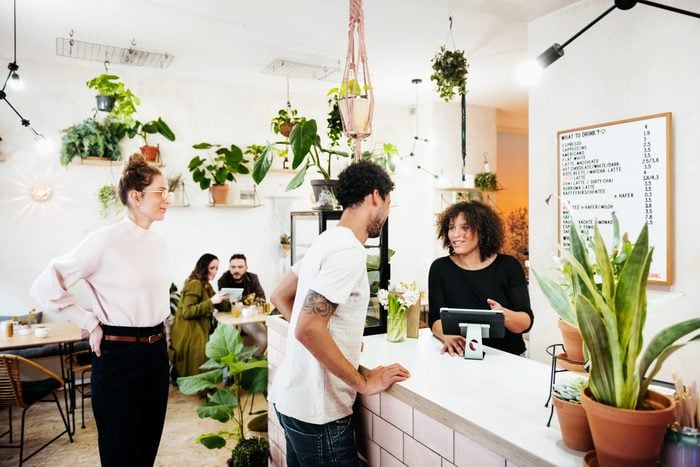
39. Wait your turn
Whether you’re waiting in line at the store, waiting for your turn at the gas pump or asking for a table at a restaurant, be patient and wait your turn. “People come up with an astonishing number of reasons for why this simple rule doesn’t apply to them,” says Grotts, “but unless it’s a true emergency, you are not the exception.”
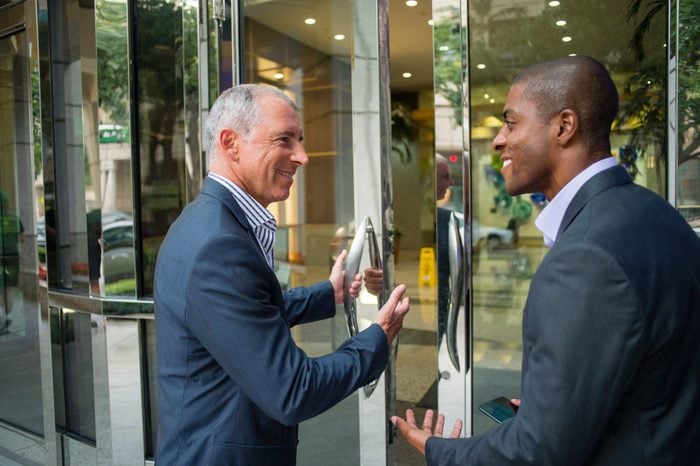
40. Open the door for the person behind you
Whoever reaches the door first is the person who should hold it open, regardless of gender. “It’s simply a gesture of human kindness and empathy,” Sokolosky says. While you should certainly hold the door for the person behind you, you don’t have to get stuck holding the door open for a whole stream of people, she adds. Nod to the next person and “pass” the door to them as you walk through it.
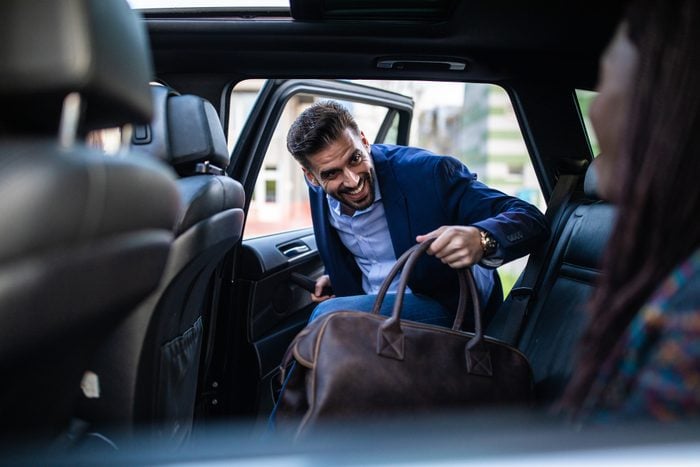
41. Scoot over if you’re the first one in a taxi
The first person into the taxi or Uber should scoot all the way across the seat to make room for the others. “Don’t make other people climb over you or walk into traffic to get in the other door,” Sokolosky says.
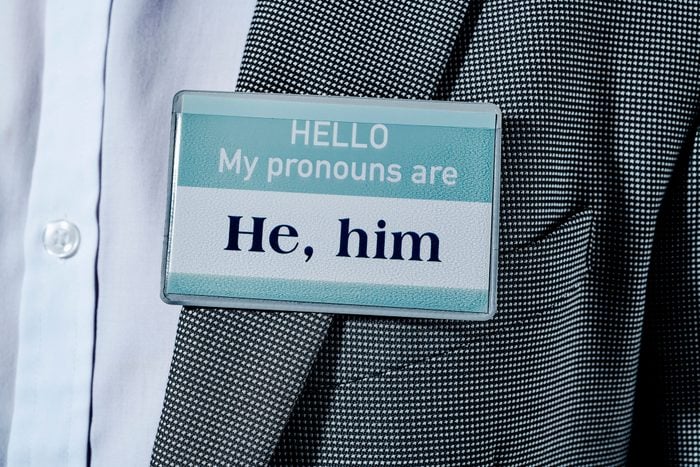
42. Don’t assume gender, sexuality or relationship status
Due to differences in gender and sexuality, many relationships are different from what you may think at first glance. For instance, many people would assume their male co-worker’s spouse was a woman, or a female friend’s partner was a man. But now, not only should you not assume marital status—many people don’t like wearing rings, or they wear rings on their “wedding” finger that have other meanings—you shouldn’t assume gender either, says Parker. “Listen to how people introduce themselves and loved ones, and then follow their lead,” she says. “If you’re unsure, it’s fine to politely ask.”

43. Never ask “Where are you really from?”
“It’s OK to ask someone once where they are from, but then accept whatever answer they give,” says Parker. “Do not follow it up with: ‘No, where are you really from?'” If someone appears to be of a different ethnicity than you or has an accent, it’s natural to be curious about their history, but it’s impolite to ask outright, as you’re basing your question only on their skin color, features, dress or voice, says Parker. Instead, ask people polite (not invasive) questions about themselves, and if you chat long enough, your questions will likely be answered naturally in conversation.
Next, discover the things that polite people always say!
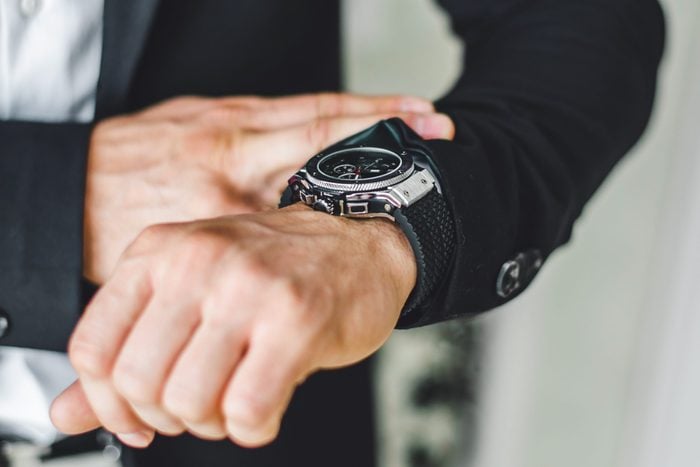
44. Be on time
“Sometimes being late is just a bad circumstance, but if you’re late often, then that’s a choice you’re making,” says Grotts. “When you are constantly late, it says that your time is more important than everyone else’s.” Polite manners say you should do your best to be on time as much as possible and to let people know if something has come up and you’ll be late. But if it’s an ongoing problem, you should make a real effort to learn to stop being chronically late.
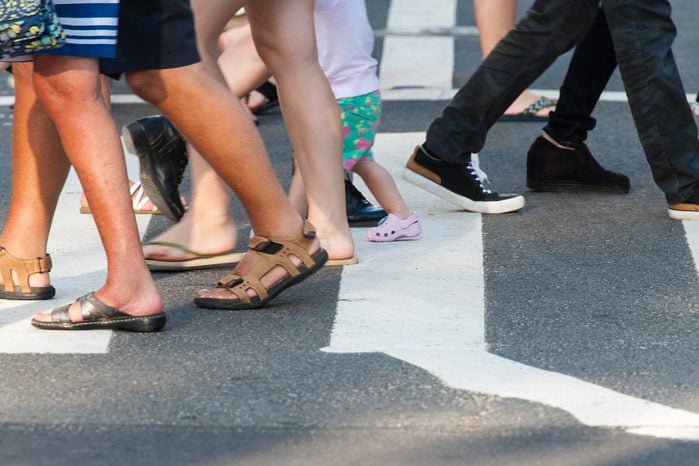
45. Walk with the flow
In most places, it’s considered polite to keep to the right on sidewalks, stairs and trails, allowing people to pass you on the left, says Parker. She adds that you should keep moving with the flow, and be careful not to block the sidewalk with a large group. If you need to stop, step to the side, and don’t block building entrances.
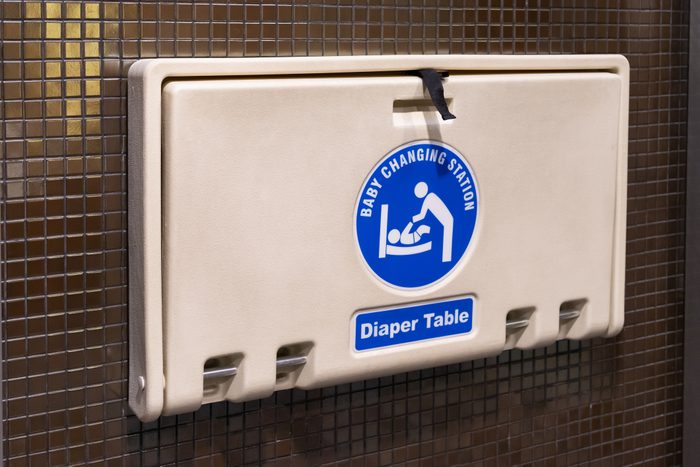
46. Change your baby’s diaper in the bathroom
This might seem like a strange rule to have to articulate, but you shouldn’t put a poopy butt on places where people eat or sit. It’s bad etiquette to change your baby’s diaper on a restaurant bench or table, on a park table, on a plane seat or on a cafe table—yet these are all things that have happened. Locate a diaper station in a restroom, or change the baby in your car, says Grotts. At someone’s house? Ask where is a good place to do your dirty work, and then fold up the dirty diaper and take it to an outside garbage can.
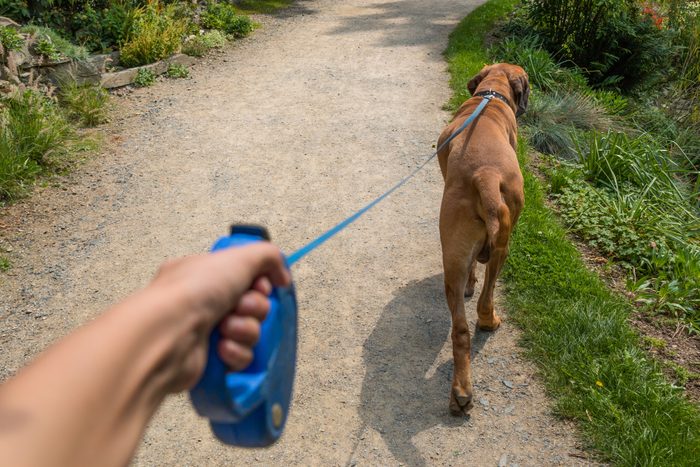
47. Keep your dog on a leash
Many dog owners think it’s OK for their pooch to run off-leash, but animals, even well-trained ones, can be unpredictable (as can little humans in the area). Good etiquette says that if you are in an area that requires leashes, then you keep your dog on a leash, says Grotts. If you want to let your dog run free, take Fido to an off-leash dog park … where you should also keep a few dog park etiquette tips in mind.
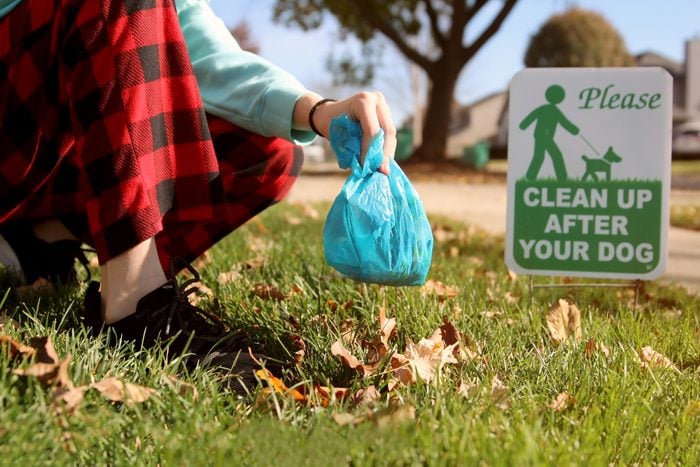
48. Clean up your dog’s mess
It’s the No. 1 rule of etiquette for dog owners: If your dog poops, you pick it up in a plastic bag and dispose of it in a public garbage can (not the neighbor’s!), says Sokolosky. And yes, you must pick it up, even if you don’t think anyone saw you or you think no one will notice. It’s your responsibility as the owner to carry bags with you.
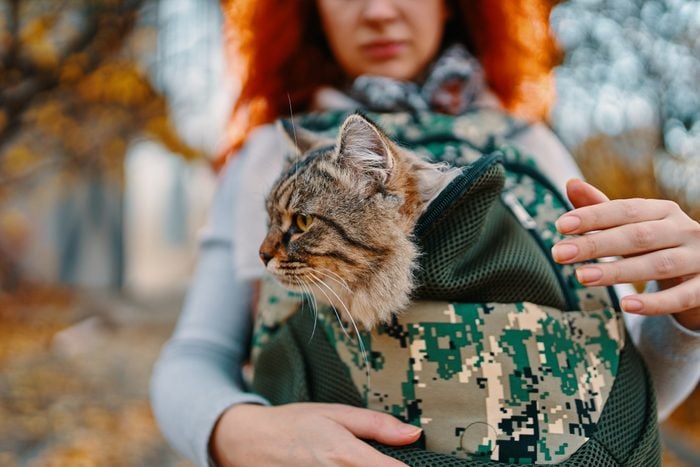
49. Ask before bringing your pet
It’s becoming more and more common to see dogs under tables in restaurants, cats in backpacks in stores and other animals traveling with their humans. However, you don’t know how other people feel about your pet or if they’re allergic, and it’s bad form to put them in that position. The polite thing to do? Avoid bringing pets into public places unless they’re specifically invited, and ask before bringing your pet to someone’s home, says Grotts.
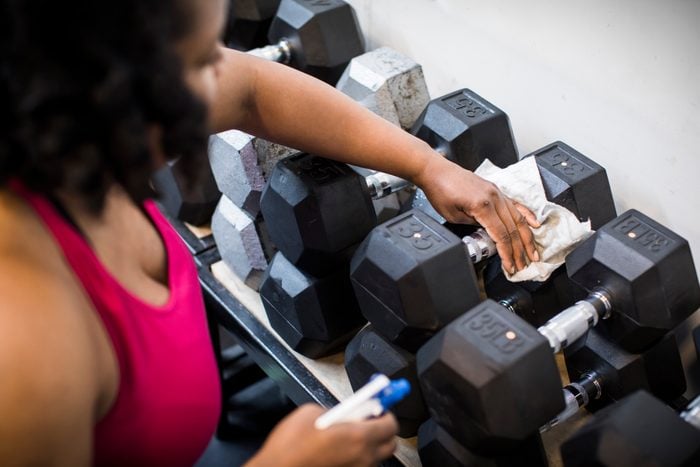
50. Wipe down equipment at the gym
Attention, gym goers: Anything that you sweat on needs to be wiped down with sanitizing spray or wipes, whether that’s a weight bench, bike seat, treadmill, locker room chair or whatever else. “Always wipe down equipment after using it, even if you don’t see visible sweat,” says Sokolosky, noting that this is basic gym etiquette. This goes double if you spit or bleed on equipment. If it’s a small mess, you can clean it up yourself with the disinfecting spray or wipes available, but anything beyond a drop or two and you need to alert gym staff so it can be properly and thoroughly sanitized.
More From Etiquette:
- How Much to Tip Hairdresser
- Tips for Hotel Housekeeping
- How Much to Tip
- How Much to Tip for a Massage
- Small Talk Etiquette
- How to Host a Party
- Table Manners & Dining Etiquette
- Business Casual Etiquette
- Wedding Toast Examples
- What is an Irish Exit?
- What to Say in an Interview
- Email Etiquette
About the experts
- Valerie Sokolosky is an etiquette expert and executive coach who counts the late Letitia Baldridge, White House Social Secretary for First Lady Jaqueline Kennedy, as a mentor. Sokolosky is the author of eight books, including Do It Right!
- Lisa Grotts is an etiquette expert and founder of the Golden Rules Gal. She credits her Assyrian American family and upbringing for her passion for all things etiquette. Grotts previously served as director of protocol for San Francisco under Mayor Willie L. Brown Jr.
- Maryanne Parker is an etiquette coach and founder of Manor of Manners and serves as vice president and chief protocol officer to the Royal Society of St. George, California Branch. She is the author of The Sharpest Soft Skill and Posh Overnight: The 10 Pillars of Social Etiquette.
